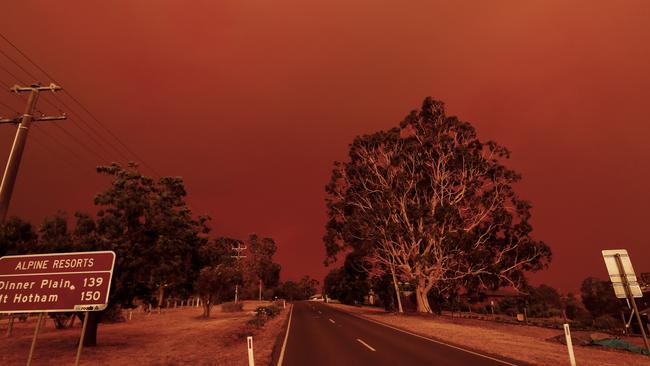The long road to recovery for East Gippsland five years on from Black Summer
The road to recovery remains long and winding for many bushfire-impacted regional communities, but there are plenty of wins to be had along the way.
The road to recovery for any community following natural disaster can be long, winding, and littered with barriers and disruptions.
But there are plenty of wins to be had along the way, with communities such as East Gippsland’s Mallacoota a prime example of what can be achieved when locals band together through the tough times.
Mallacoota and District Recovery Association chair Carol Hopkins said the group was formed in the wake of the devastation in Mallacoota after the Black Summer fires of 2019-20, with a focus on amplifying community voices in the acute recovery period.
“Being heard is a really enormous part of the success of a recovery journey, and empowering the community to do what’s needed,” she said.
MADRA has since completed an expansive list of projects, including rebuilding many Mallacoota-based facilities, psychological first aid training, fuel management webinar series, upgrades to the Gipsy Point tower, construction of 10 new social and affordable homes, and rebuilding the historic Genoa Bridge.
But despite the success stories, Ms Hopkins said the list of projects was ongoing and “huge”: “It’s been a long journey, and complex, and we’re still not done.”
Ms Hopkins said the rebuild rate for the Mallacoota region since the fires was “not much more than 30 per cent”.
“And this is a tourist town, some were holiday homes, but 80 families lost homes … It’s had a real impact on the rebuild, we can’t bring tradespeople in to build, they can’t stay anywhere, and the cost to rebuild goes up,” Ms Hopkins said.
Other issues plaguing recovery efforts include volunteer burnout.

Billions of dollars of government and philanthropic funds were directed towards the Black Summer recovery, including the federal government’s $2.2 billion National Bushfire Recovery Fund, and $26 million donated to the Foundation for Rural and Regional Renewal.
Ms Hopkins said structural issues in politics and government made accessing funding and grants frustrating at times.
“When the money comes straight back to us, we have a lot of control of what’s happening on the ground in terms of economical efficiency, ecological in terms of how we get things done, and bringing in the funding to the local level.”
Federal member for Gippsland Darren Chester said a lack of urgency in bureaucracy, and red tape has “choked the Black Summer bushfire recovery process”, leaving communities behind.
“Whether it’s replacing the bridge over the Thurra River, rebuilding the Cape Conran cabins or reinstating tracks and trails which were impacted by the bushfires, the community is still waiting for the work to be completed,” Mr Chester said.
“After four mild summers, the vegetation regrowth on public land is extraordinary and we face the next few months with some trepidation. The skilled timber workers and contractors are now out of the bush, and the State Government has cut its outdoor workforce, so we haven’t seen the hazard reduction and bushfire mitigation works we need.
“Sadly, it seems we haven’t learned the lessons of the Black Summer.”





